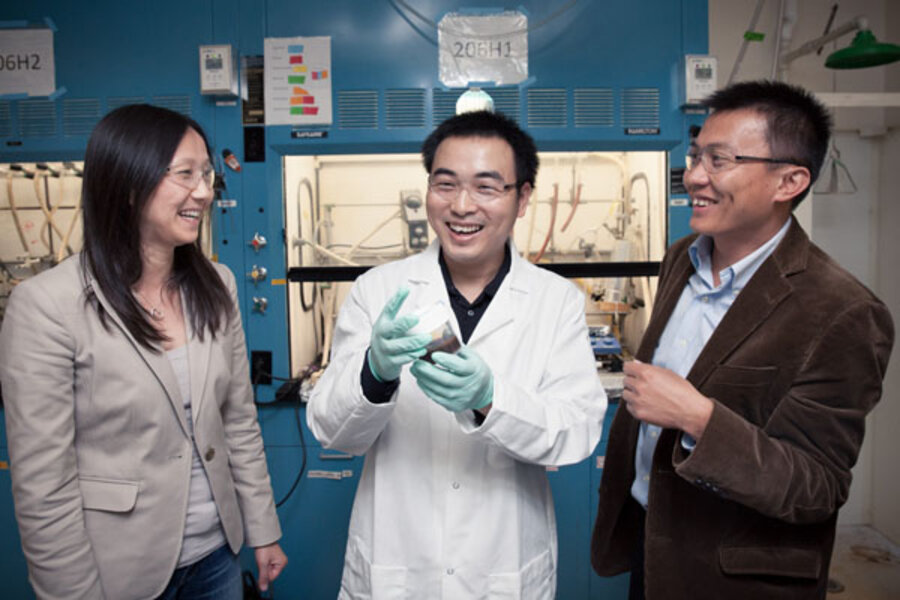How a self-healing battery could mean more life for your phone
Loading...
A self-healing silicon electrode could mean a longer battery life for your smartphone, laptop, or electric car.
Researchers from Stanford University and the SLAC National Accelerator Laboratory have created a battery electrode that heals itself. This could mean a longer life for the lithium-ion batteries used in iPhones and other devices.
Most lithium ion batteries use carbon electrodes on their positive site, which is called an anode. But silicon electrodes can store 10 times more lithium, says Yi Cui, an associate professor at Stanford and one of the lead researchers. This means a longer battery life.
So then why don't most batteries use silicon electrodes?
Because the tiny particles they're made of swell to three times their size and then shrink again during each charge cycle, the team wrote in their paper. This causes them to eventually crack and fall apart.
"If you can make silicon work to replace carbon, there's a huge impact right there to store a lot more energy," Dr. Cui says.
The team solved the problem with a synthetic polymer goo that heals the cracks within hours. Electrodes coated with the mixture lasted 10 times longer.
"I think this is really a promising approach to make silicon workable for the battery electrode," says Cui.
The team got the idea while another group, headed by Stanford professor Zhenan Bao, was working on developing artificial electronic skin.
"We were thinking, 'Why can't we combine a self-healing polymer together with a battery?'" says Cui. "That's how we started this project."
The hydrogen-bond formation within the polymer works like a zipper to zip up the cracks, explains Cui. To keep the mixture electrically conductive, the team also added carbon nanoparticles.
Cui, Bao, and others actually already created a silicon anode earlier in the year using nanoparticles – even smaller than the microparticles used in this research.
The nanoparticles are so small that there is no risk of them breaking down any further, Cui says. The trick here was keeping up an electrical connection between the tiny particles using a hydrogel.
But Cui says micro-size silicon particles are a lot cheaper and easier to make.
"If you can make micro-size particles work, then you can have a very big impact," Cui says. "In the past, making microsize particles work was much harder because they would break. Nano-size particles don't break."
The team still wants to work on improving the number of charge-discharge cycles the electrode can endure before losing its permanent storage ability. It's a process all batteries go through before they begin to die.
What's a charging cycle? Apple defines one cycle as going through 100% of the battery and charging it back to full. Once an iPhone or iPod goes through a certain number of these charge cycles, the device will lose its original battery capacity. At that point, your iPhone will charge only to 80 percent of battery life.
The electrodes worked at full capacity for 100 charging cycles – cell phones and laptops typically go through 500 cycles before deteriorating, Cui says. Electric cars typically go through 3,000 cycles.
In contrast, the nanoparticle silicon anodes could go through a full 5,000 cycles.
"So far our performance of using self-healing for microsize particles still needs improvement to get to the same level as the nanoparticle performance," Cui says. "At least this study..really shows that this self-healing concept is very promising."








